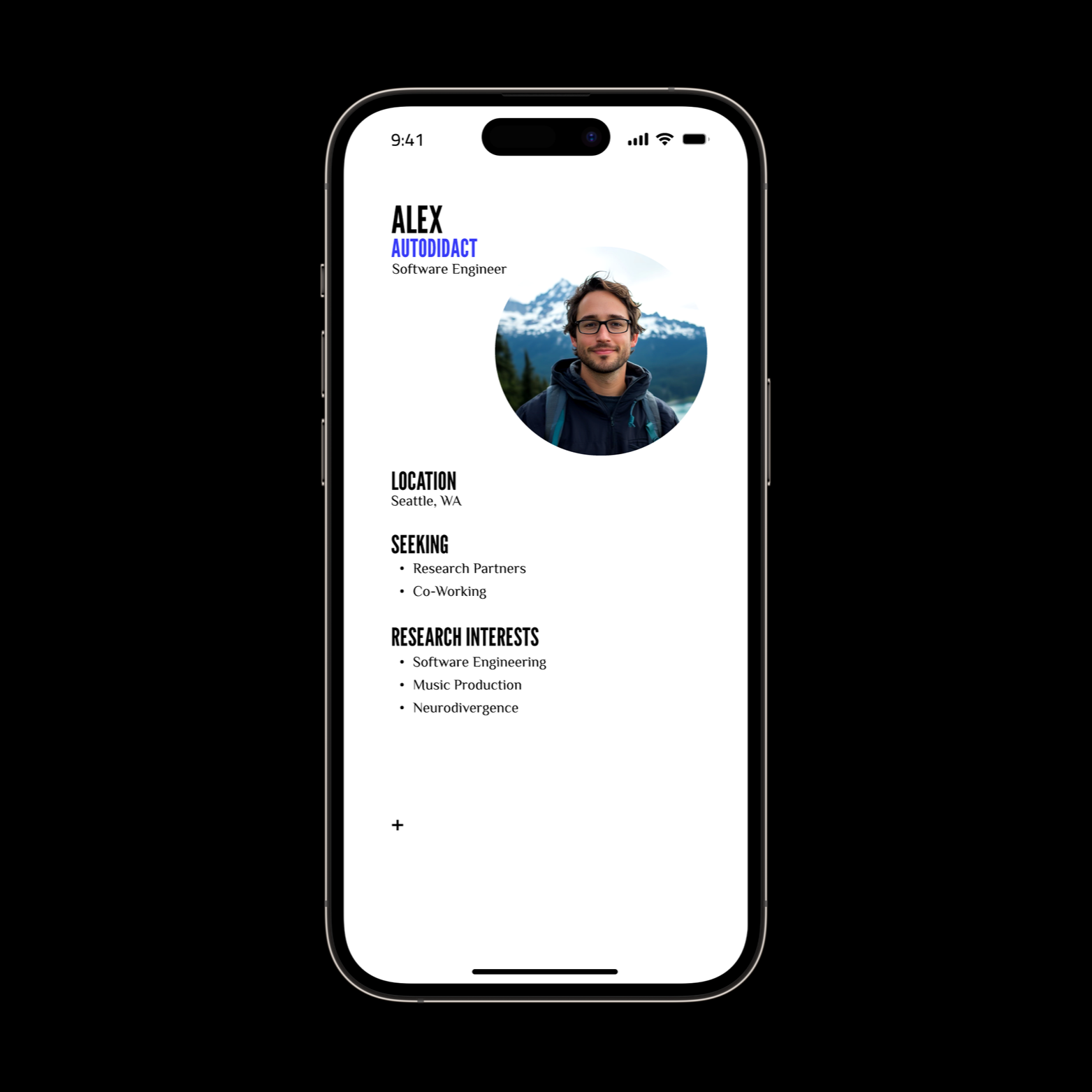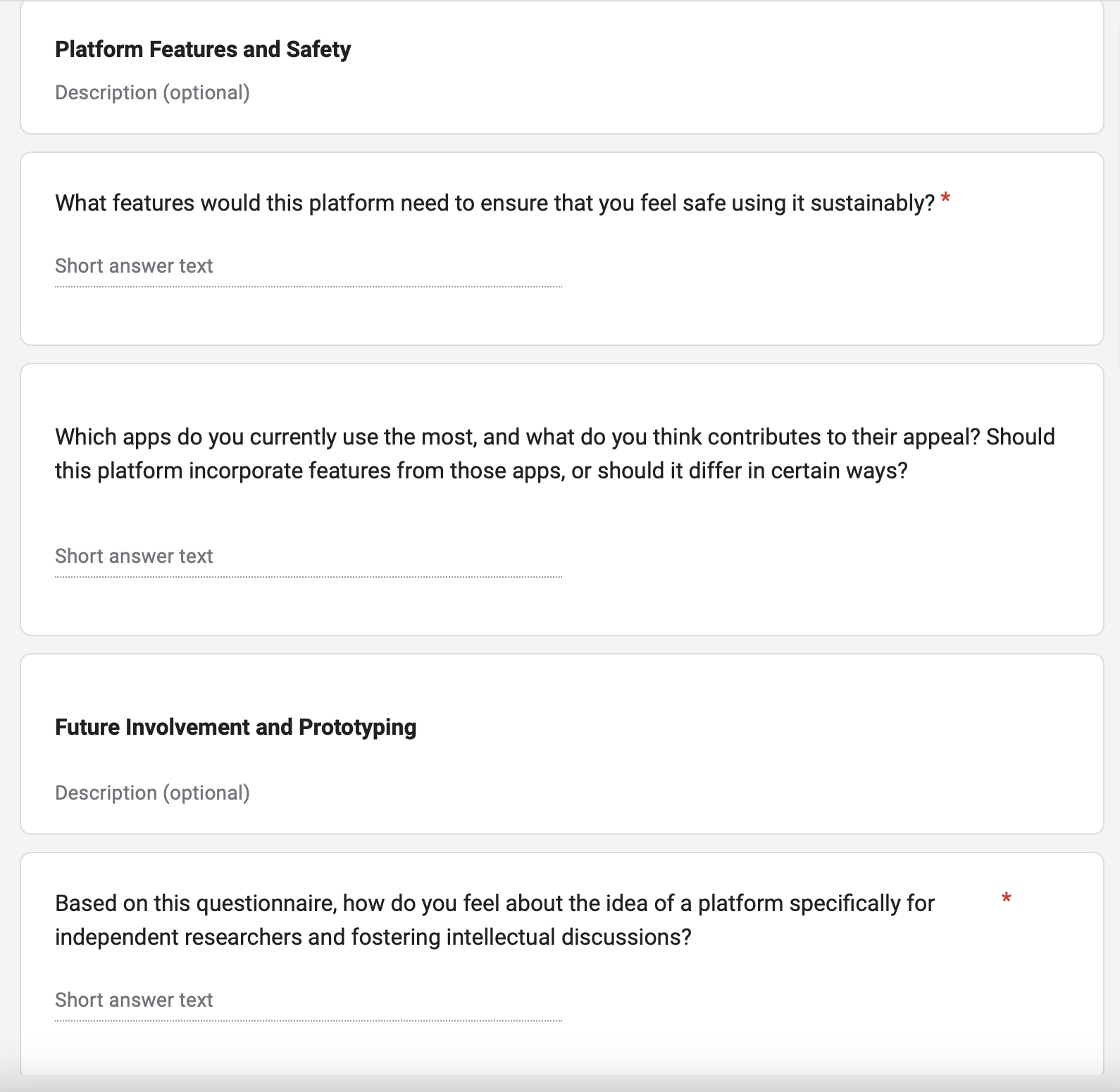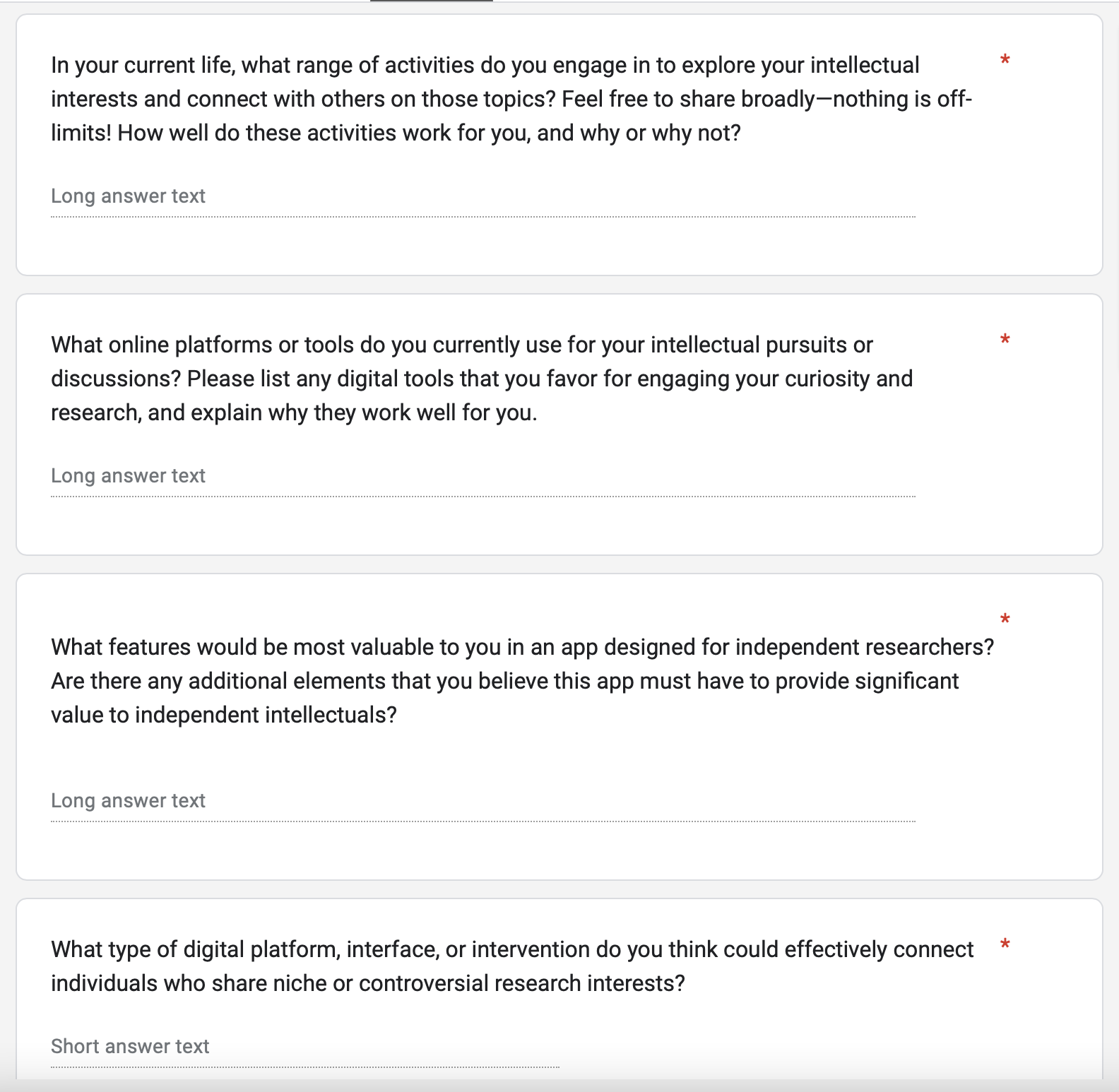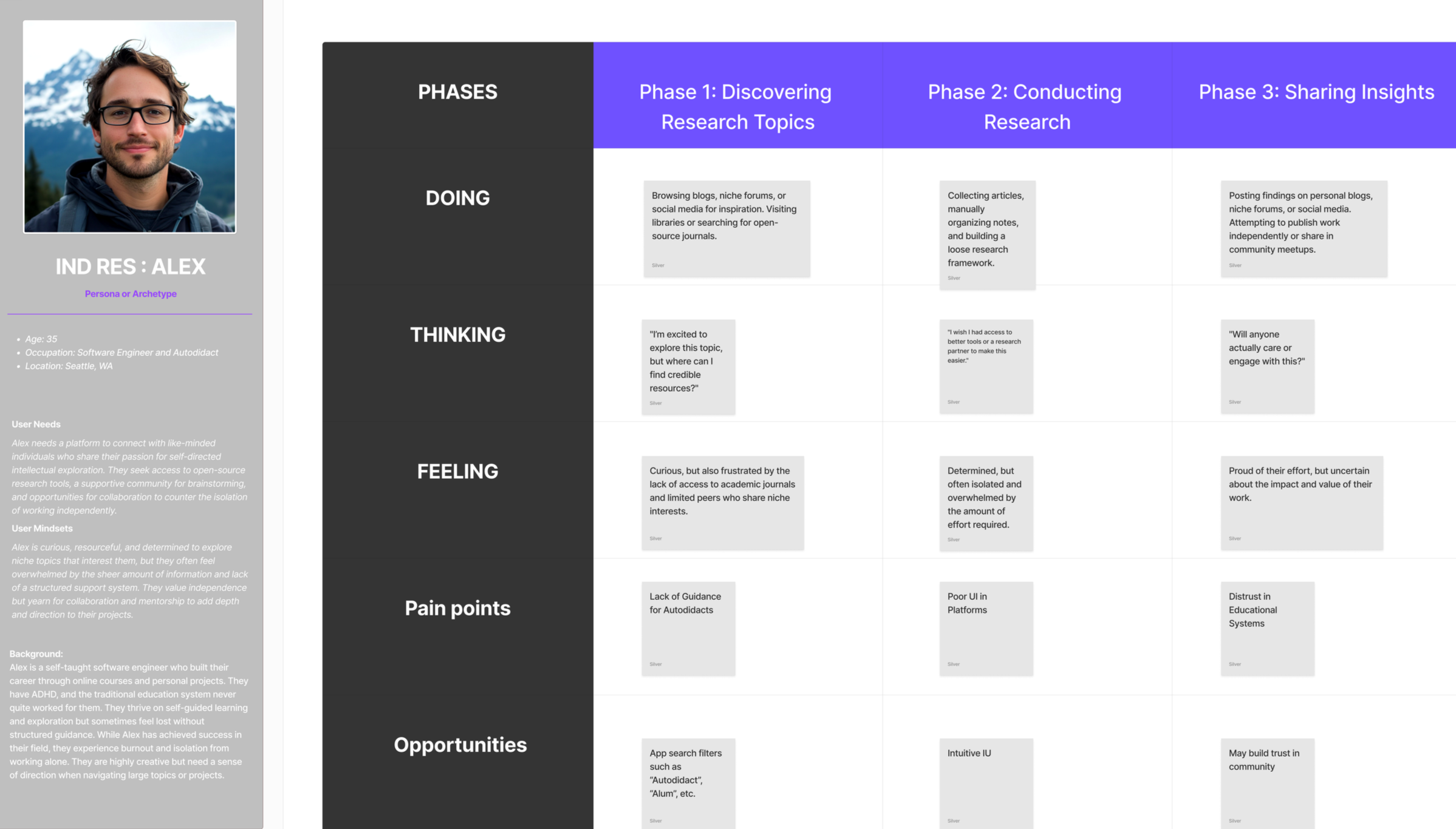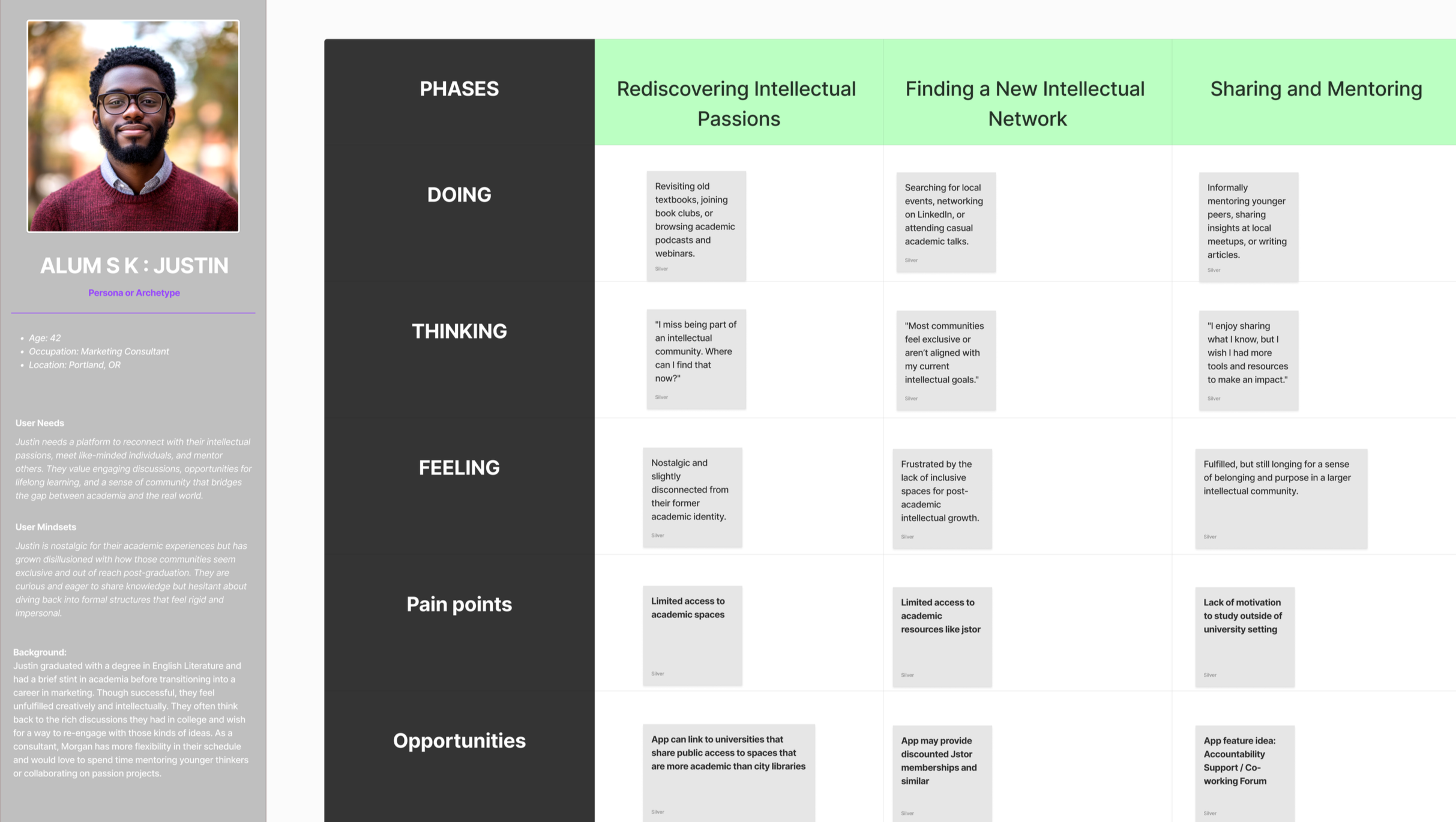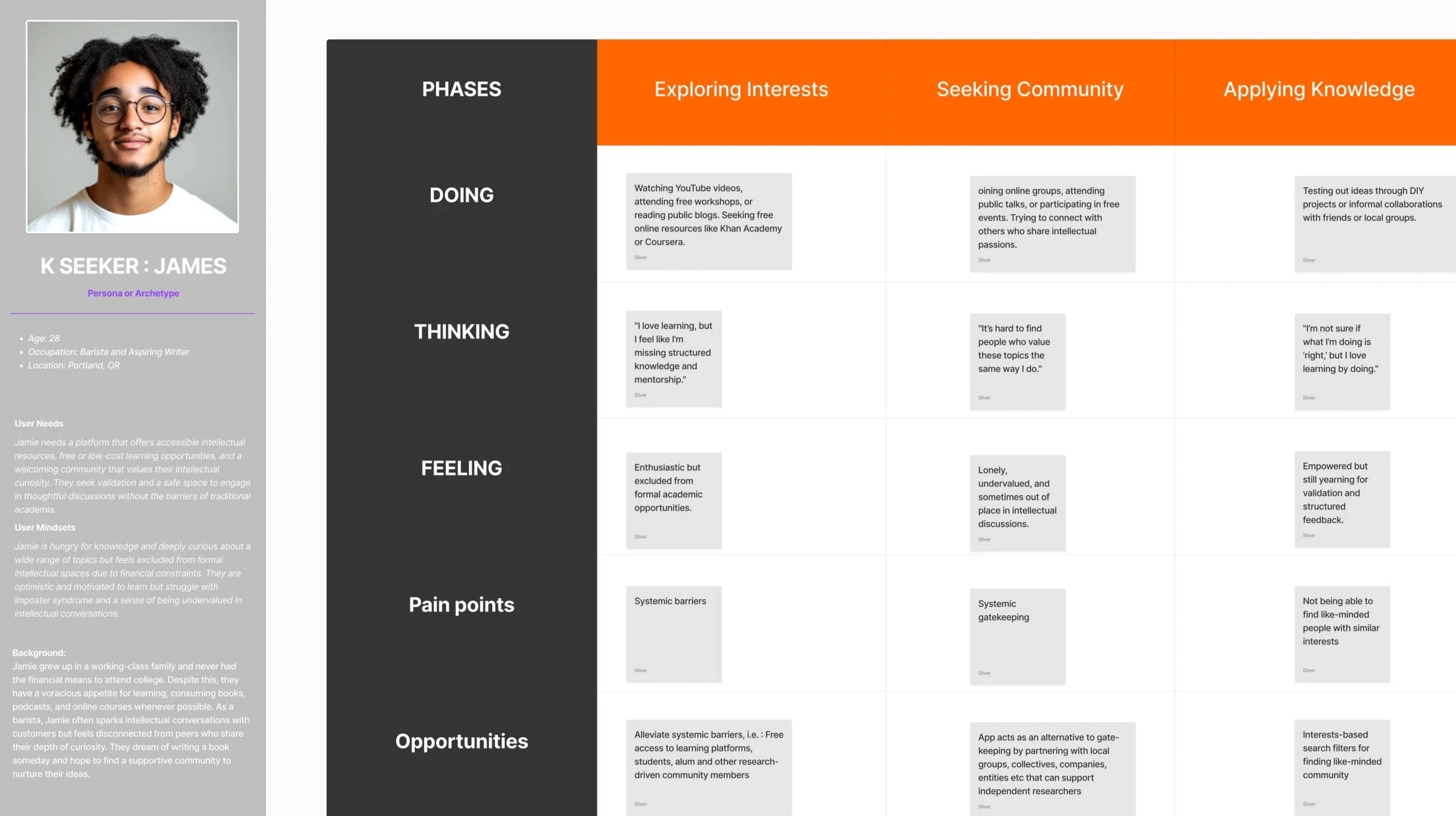AXIS APP
Project Overview
AXIS is a research-driven platform concept designed to support independent and interdisciplinary scholars seeking meaningful connection, collaboration, and access to shared knowledge. This self-initiated case study applies a full-cycle UX process to address a real-world problem experienced by many globally dispersed thinkers who operate beyond the boundaries of traditional academia. The project was completed as part of a rigorous, mentored UX studio course led by a former IBM UX researcher. While independently executed, it was reviewed through structured critiques that simulated real-world stakeholder engagement.
Role
UX Researcher · Service Designer · Brand Strategist
Timeline
10 weeks
Tools
Google Forms & Sheets · Figma · Miro · Adobe Illustrator · Zoom
Target Users
Educated professionals aged 30–60, globally located. Values included epistemic equity, collaborative research, and intellectual freedom.
Challenge
Many independent and nontraditional scholars—ranging from self-taught researchers to professionals between institutions—face barriers to collaboration, mentorship, and visibility. How might we design a digital platform that supports knowledge exchange, legitimacy, and connection across geographies and disciplines?
Research Approach
Survey design and distribution (n ≈ 30)
Semi-structured interviews
Affinity mapping of qualitative data in Miro
Thematic synthesis across data sources
Persona development (3 total, 1 primary)
As-is journey mapping for each persona
Pain point clustering and opportunity mapping
Validation & Feedback Loop
Emerging insights were reviewed and refined through mentor critiques and iterative synthesis, simulating stakeholder feedback. I also shared early artifacts with select research participants to inform terminology and flow logic.
Key Insights
Scholars crave peer validation and structured mentorship—not just access to content.
Institutional gaps leave researchers piecing together fragmented tools.
Distrust in traditional academia is growing, but appetite for collaborative, justice-rooted research networks is strong.
Trust is built through clarity, usability, and shared values embedded in design.
User Personas
Alex (Primary Persona): A 35-year-old autodidact software engineer, isolated and creatively blocked, seeking intellectual collaboration.
The Knowledge Seeker: A prospective student seeking alternatives to formal education.
The Returning Scholar: A post-graduate professional missing community and visibility.
Each persona reflected users in transition—balancing expertise with a desire for meaningful exchange and collective support.
Journey Mapping
I created three as-is journey maps to visualize user needs, barriers, and emotional states. Common themes included:
Lack of community and intellectual stimulation
Disconnection between platforms, tools, and networks
Unclear pathways for long-term scholarly visibility
These maps shaped the structure of the platform and informed core interaction flows.
Design Process
Brand Development
I created the AXIS brand identity to reflect structured, decolonial knowledge exchange and cultural inclusivity.
UI Style Guide
Modular grid system
High-contrast, accessible palette
Clean, legible type hierarchy
Multilingual font support
UX & Interaction Design
8 key screens covering onboarding, matching, and collaboration rooms
Wireframes and user flows built and refined in Figma
Clickable prototype with demo video
Solution
AXIS is a centralized, values-driven platform where users can:
Showcase research and independent projects
Connect with peers via topic-based cohorts
Access curated resources (grants, tools, events)
Build long-term visibility in a global scholarly network
The platform emphasizes simplicity, searchability, and design clarity—tailored for independent scholars across the world.
Outcomes
Lead rigorous, equity-centered UX research from framing through synthesis
Translate complex user needs into actionable product and service features
Design accessible, intuitive systems grounded in strategic design thinking
Create holistic user experiences that bridge content, community, and platform logic
Deliver functional prototypes and compelling artifacts under realistic constraints
Next Steps
Usability testing and iterative validation of flows
Community governance models and moderation design
AI-supported peer matching and trust systems
Integration with platforms like Humanities Commons or ResearchGate

